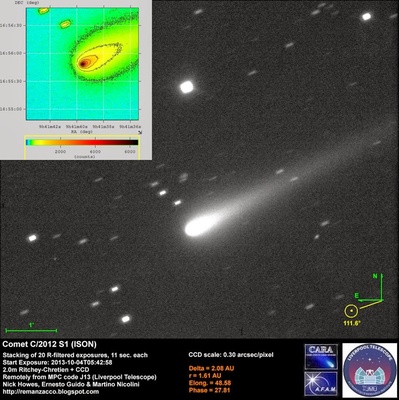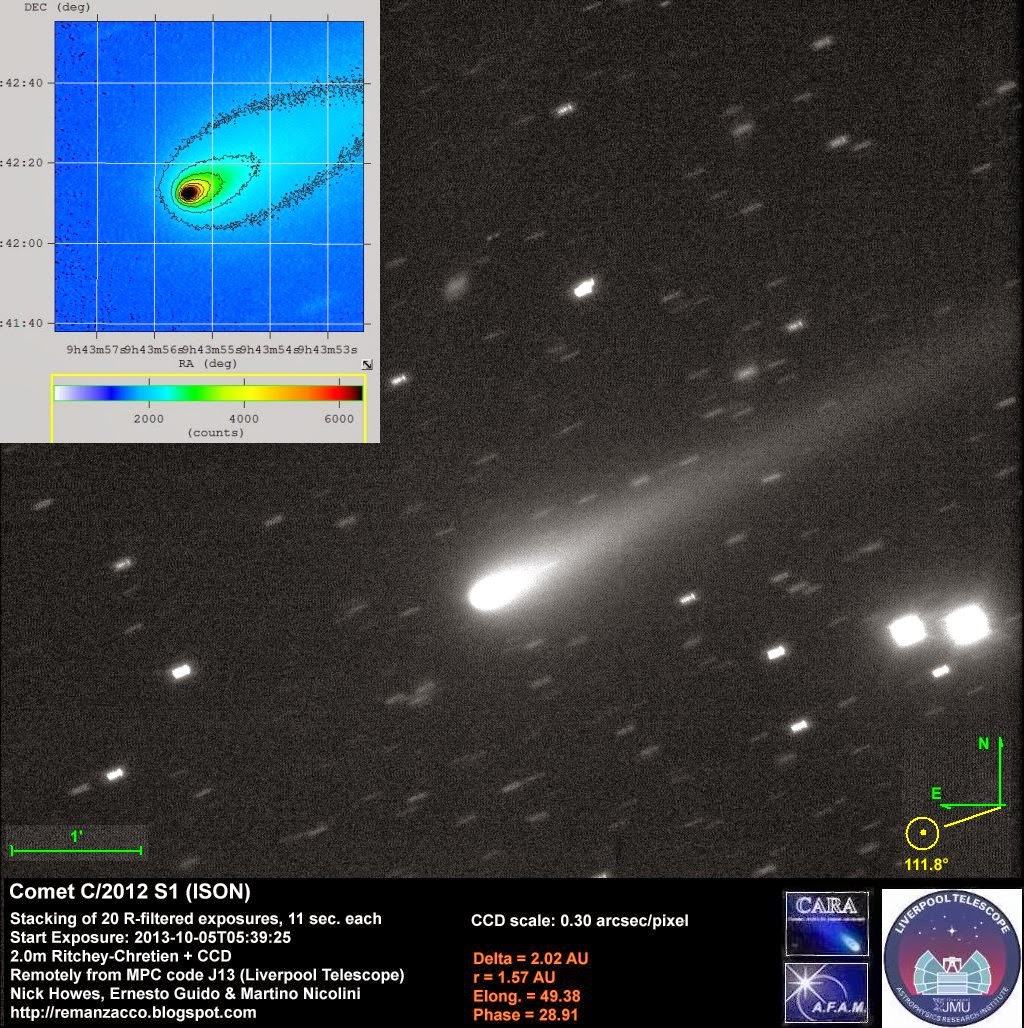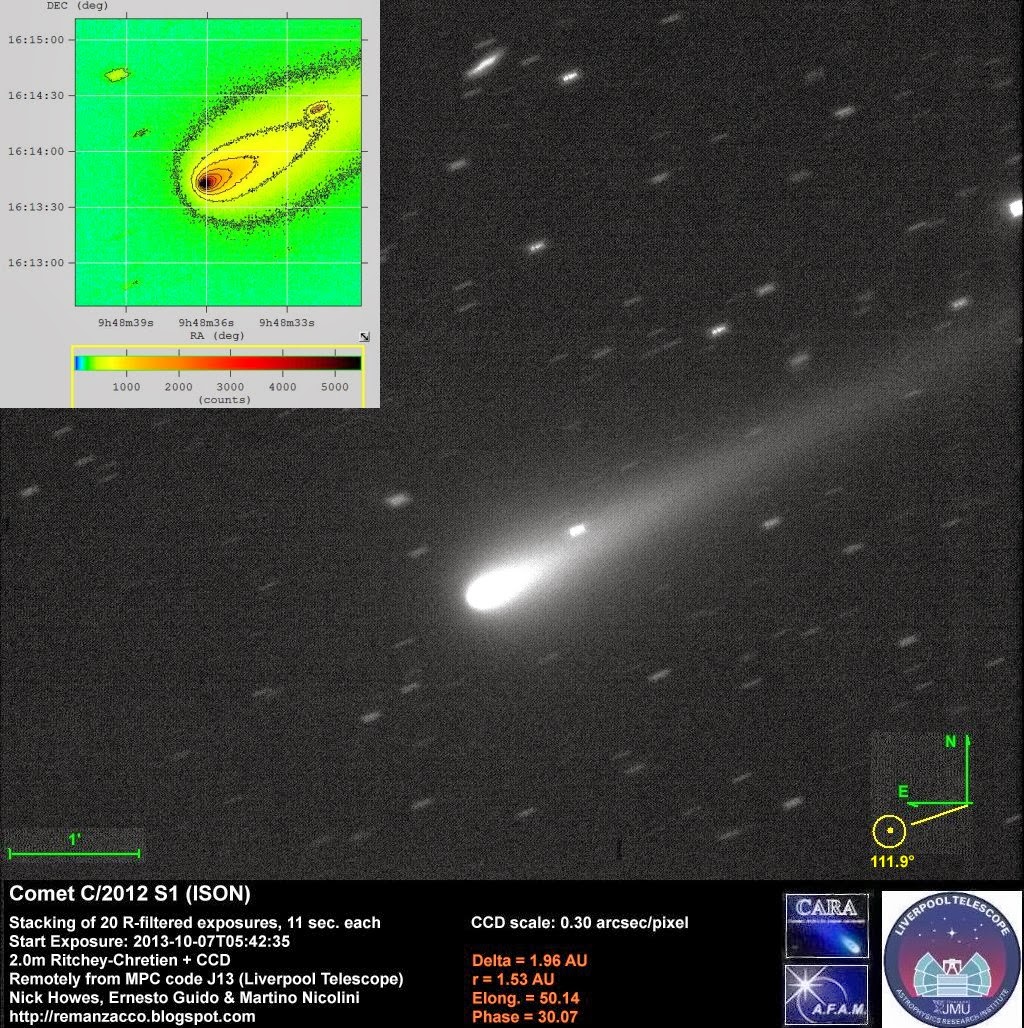Comet C/2012 S1 (ISON) - Update 2013-10-16
We obtained new data on comet C/2012 S1 (ISON) on October 05, 2013. The details are on the caption of the image below.
We obtained new data on comet C/2012 S1 (ISON) on October 07, 2013. The details are on the caption of the image below.
Here we present a preliminary analysis with respect to a sunward facing feature detected on comet C/2012 C1 (ISON) The feature imaged between 30th Sept 2013 and 7th Oct 2013 is clearly visible and reproducible in images taken over four observing nights we had with the 2.0 m. Liverpool Telescope between these dates.
All images have the same integrated exposure time (being a sum of 20x11sec.=220sec at 2x2 binning on the CCD, yielding a pixel resolution of 0.3”/pixel.) In all image the same filter (SDSS R' band) and exactly the same false-color scale visualization using Astroart software has been deployed.
After the usual dark subtraction and flat field correction using field data provided by the Liverpool Telescope (as on some nights, automatic calibration was not performed) and stacking on the photometric centre of the coma, we built a radial normalization model of the coma suing a plug in developed for this purpose within Astroart (The plug in is known as the M.C.M. or Median Coma Model). With this , we then subtracted the modelled image from the original image data to enhance any difference between the real and the "ideal modelled" coma.
The results of this processing is shown in the four images detailed below. Each square is a zoomed in view of the full image, and each image is 30" wide, with each rectangular white grid scaled to 7.5"x10". The white pixel in the centre of each image is the brightest pixel inside the coma, known as the optocenter.
The sunward facing feature, feature shows a maximum size on data taken on the 7th Oct reaching out to about 2.7 arcsec (about 4500 km at the projected plate scale) and also is notably almost absent on data taken on the 4 Oct, which we believe is due to adverse seeing conditions on this date at our site on La Palma. The seeing conditions for each night as measured are :1 Oct/1.1" arcsec, 4 Oct/2.1" arcsec, 5 and 7 Oct. 1.5" arcsec.
At this plate scale the sunward facing feature we believe cannot be associated with any degree of confidence with any nuclear phenomenon (eg/jets) but after careful analysis, we now believe it to be a typical cometary coma condensation. We therefore state that this feature is a cometary atmosphere feature present in almost all comets approaching the Sun and the Earth.
by Nick Howes, Ernesto Guido and Martino Nicolini



